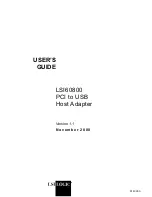
RA8000 and ESA12000 Storage Subsystems
1–14
387404-001
EK–SMCPR–UG. A01
1.2.3.6 Maximum Bus Length
The maximum bus length, including external cables (distance from the I/O module
terminator to the last terminator on the bus) is a function of the bus speed and the number
of devices. If the external bus is configured point to point (from SE I/O module-to-SE I/O
module with no devices installed in between), the cables may be extended to 20 meters
due to the isolation and re-timing circuitry of the SE I/O module.
1.3
Error Detection and Reporting
The subsystem error detection and reporting function has two major elements – the fault
bus and the EMU (environmental monitor unit). For a detailed discussion of error
detection, fault reporting, and correction, refer to Chapter 4, Error Analysis and Fault
Isolation.
1.3.1 Fault Bus
The subsystem fault bus monitors subsystem operation and reports fault conditions to
either the HSG80 or the HSZ80 array controller and the EMU. The array controller and
EMU then report the error condition to the user. The fault bus monitors the following
conditions:
•
Blower failure (SHELF_OK)
•
Power supply failure (SHELF_OK)
•
Storage device removal (SWAP_L)
•
Storage device installation (SWAP_L)
•
SBB failure (FAULT_CLK, FAULT_DATA)
The fault bus consists of three subsystem backplane signals routed to the array controller
port connectors as follows:
•
Shelf Status Signal – The SHELF_OK status signal indicates the state of subsystem
power (ac and dc) and blower operation
•
SBB Swap Signal – The SWAP_L signal is asserted whenever an SBB is removed or
inserted in the subsystem
•
SBB Fault Signals – The SBB amber LED displays either the storage address or
indicates a device fault. This device fault LED is controlled by the fault clock
(FAULT_CLK) and the fault data (FAULT_DATA) control signals.
















































